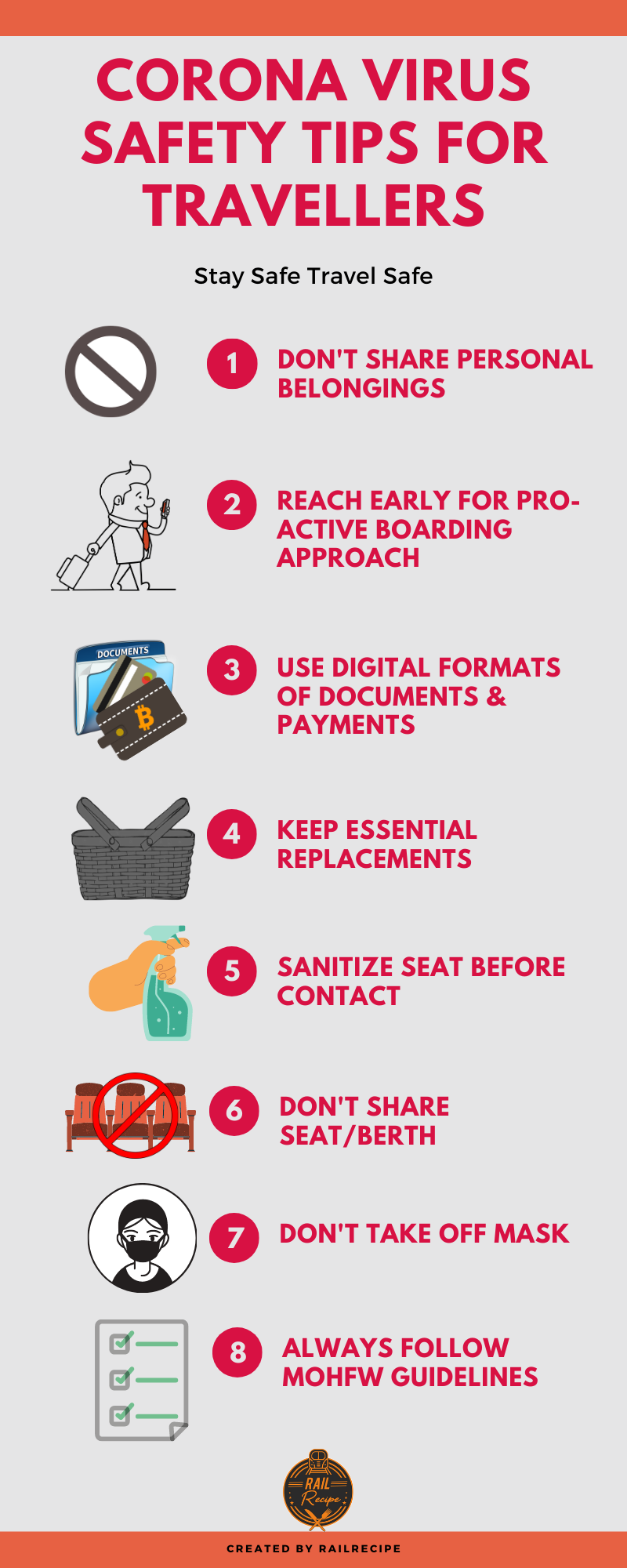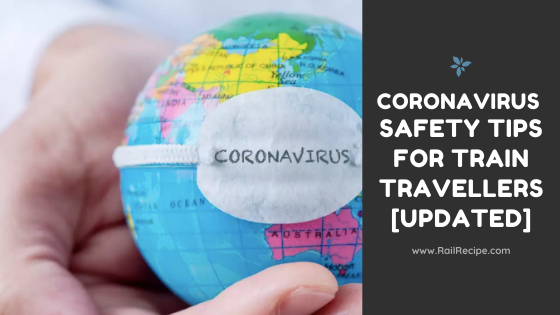Earlier in our precautionary blog. Railrecipe had enlisted a set of guidelines to be followed during train travel. If you haven’t read the blog, we would suggest you to go through it before proceeding further. We are hereby elaborating further on the revised guidelines for safe travel amidst Unlock being carried out across the nation. It looks very frustrating to see the number going up day over day in terms if infection rate. India has confirmed more than 450,000 cases of COVID-19 so far, making it the world’s fourth-worst-hit country. Major cities such as Delhi and Mumbai are particularly badly affected, with hospitals struggling to accommodate critically ill patients. Data might vary till the time you are reading this article.
Suggested Reading: 8 Myths Busted to Help You in Battling COVID-19 Infodemic
Coming to India’s COVID-19 mortality rate, which is officially 11 deaths per million people in the population — among the lowest in the world. By comparison, the United Kingdom has seen 635 deaths per million people, and the United States has seen 376. The mortality per million people in India is expected to be lower because of the low average age of India’s population. But the problem with death as an indicator is that a COVID-19 death has to be certified as such. The only way to do this is through an RT-PCR test (a reverse-transcription polymerase chain reaction test, which looks for viral genetic material in nose and throat samples). And with a population of 1.3 billion, what do you think is the proportion of people that has access to this kind of testing? It is very low.
Amidst of all these studies and suggestions, it all lies in our hands and changing our behavior during day to day activities to stop the spread of infection and prevent large scale community transmission. People are up and are now traveling across India via road, rail and airways. The chances of infection are no doubt higher. Strict guidelines are in place but for nation with 1.3 billion population, it’s not easier to micro manage things at such a large scale. Apart from the preliminary guidelines which included frequent hand washing, use of only bottled beverages and avoiding any contact with random surfaces, Railrecipe is listing out revised guidelines for the safety of every train traveler of the nation.
- Carrying Safety Gears: The SOP’s from travel authorities of GOI have already advised to carry personalized safety gears while planning any form of travel. Although, it has been advised to avoid travel if the need is not for a business and simply for pleasure. Do not share your personalized safety gear even among your family members. It might sound rude in a way but by doing this, you are actually showing your care for their well being.
- Pro-Active Boarding Approach for Better Surveillance During Travel: The passengers already have been instructed to reach at-least four hours ahead of the scheduled departure of their train. This will be done keeping mind keeping the additional safety protocols, including thermal screening and other methods to screen passengers boarding trains.
- Proper Temperature Ambiance Inside Train Compartments: Only non-AC coaches have been made available to contain the spread of disease as Corona virus is believed to have greater potential for transmission in air-conditioned environment.
- Safeguard Your Travel Documents and Wallet in Sealed bags: Travel tickets might be frequently checked and hence keeping them in separate bags would be a better way to avoid contact from whole of the luggage.
- Keep Handy Essential Replacements During Travel: Do not forget essentials like spare plastic pouches, hand sanitizer, water bottle, paper soap, some snacks, comfortable footwear and disposable napkins or towels.
- Sanitize Your Train Compartment Berth Before Contact: Once you find your berth, clean it with an alcohol-based sanitizer. Apply it on other areas as well which you may come in contact with like the berth handles and ladder (if you’re allotted the upper berth).
- Forbid sharing your seat/berth with fellow passengers: You might be unaware of a potential carrier of infection. So it is advised not to share your berth during travel.
- Go Cashless and Avoid Currency Handling: In case you buy something, either make online payment or ask the vendor to place the change in a plastic bag. Use sanitizer to decontaminate the wrapper or bottle of the purchased item before consuming. Order food online in trains from authorized e-catering service providers that offer contactless delivery practices.
- Avoid Discarding Masks or Protective Wearable in Open Environment: Do not discard mask, gloves or other trash at the station or outside it. Carefully place them in a sealed bag and dump in a closed dustbin.
- Remember to follow the SOP’s of Unlock as prescribed by MOHFW: Upon reaching ones destination, move to a sanitizing place and dip all your clothes into hot water soaked in detergent. Take a hot water bath and drink Luke warm water or immunity booster preparations at home.
We should focus on two things. The first is a reverse quarantine for elderly people — where the old and the vulnerable are quarantined from others to protect them. The second is to put all our money in hospitals, and provide oxygen for patients. That manoeuvre will save lives.
TL-DR: Here’s a quick infographic for tips:

Always remember that COVID-19 is a fomite borne infection disorder and only way out is stop touching any random surfaces, maintaining a safe distance from fellow travelers (at-least 6 ft.) and practicing immunity boosting living practices as prescribed by Ayush dept., GOI. Travel Safe, Stay Safe!!


